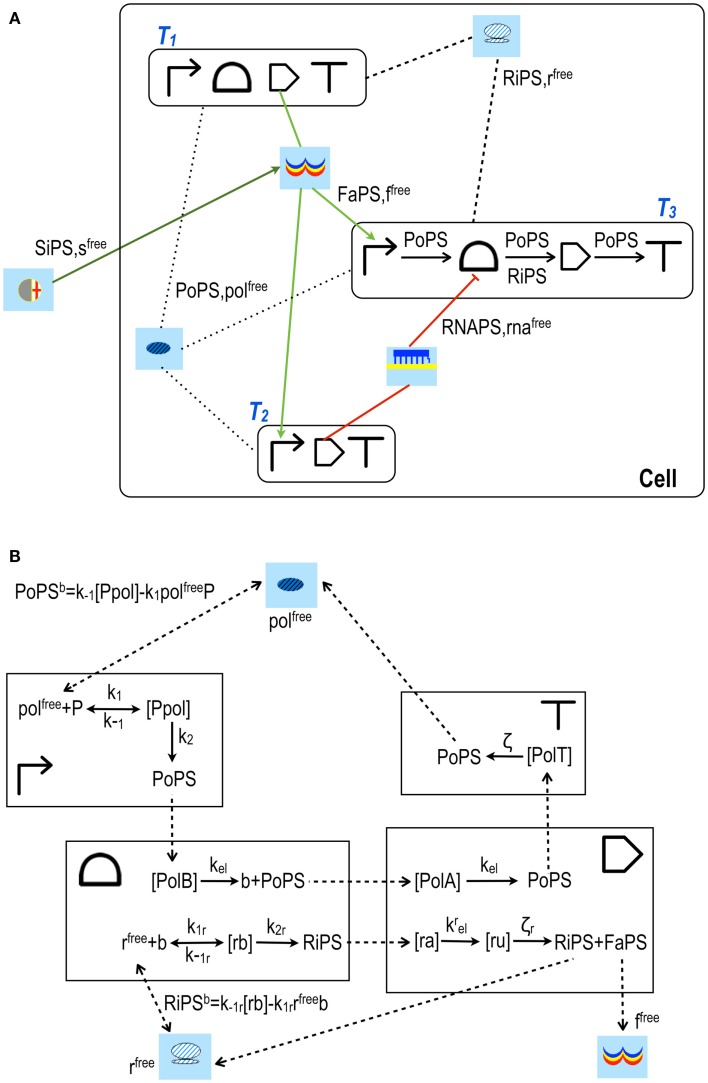Figure 3.
Design and modeling in Parts & Pools framework. (A) I1 FFL (incoherent 1 feed forward loop). The three transcription units (T1, T2, and T3) that form this network motif (Alon, 2007) are enclosed into boxes. T1 produces an activator protein that, upon binding the signal s, activates transcription along T2 and T3. T2 encodes for small RNAs that bind T3 mRNA at the RBS and repress the translation of the circuit readout. Parts are interested only by PoPS and RiPS fluxes, as shown inside transcription unit T3. Pools, in contrast, exchange with the connected transcription units (or Pools) both fluxes and molecules’ concentrations. (B) Model for transcription unit T1. RNA polymerase Pool is connected to T1 promoter and terminator, ribosome Pool is linked to T1 RBS and coding region. All the fluxes are shown as dashed arrows. PoPSb and RiPSb are bidirectional fluxes (the superscript b stands for balance) and arise from the binding/unbinding interactions between RNA polymerases (polfree) and the promoter (P) or between ribosomes (rfree) and the mRNA (b) transcribed into the RBS. All the other fluxes flow in a unique direction. PoPS generated by the promoter is equal to k2[Ppol] and goes entirely into the species [PolB] belonging to the RBS Part. [PolB] represents a complex between RNA polymerases and the RBS DNA sequence. Similarly, PoPS flows from the RBS into the complex [PolA] inside the coding region (A refers to the ATG codon) and from [PolA] into a new complex [PolT] inside the terminator. Here, RNA polymerases leave the DNA and flow back (as PoPS) to their Pool. mRNA is modeled with four species: b and [rb] into the RBS, [ra] and [ru] inside the coding region. b is the mRNA free of ribosomes, [rb] represents ribosomes bound to the mRNA during the initiation phase. A RiPS flux [equal to k2r[rb]] is generated into the RBS and sent to the coding region where it joins the complex [ra] (a comes from the AUG triplet). From [ra], RiPS flows into a new complex [ru] (u represents the first nucleotide of a STOP codon) from which ribosomes leave the mRNA (returning, as RiPS, into their Pool) and release the activator proteins. The latter flow, as FaPS, into their transcription factor Pool where they become free molecules (ffree) and can then interact with both T2 and T3 promoters.

